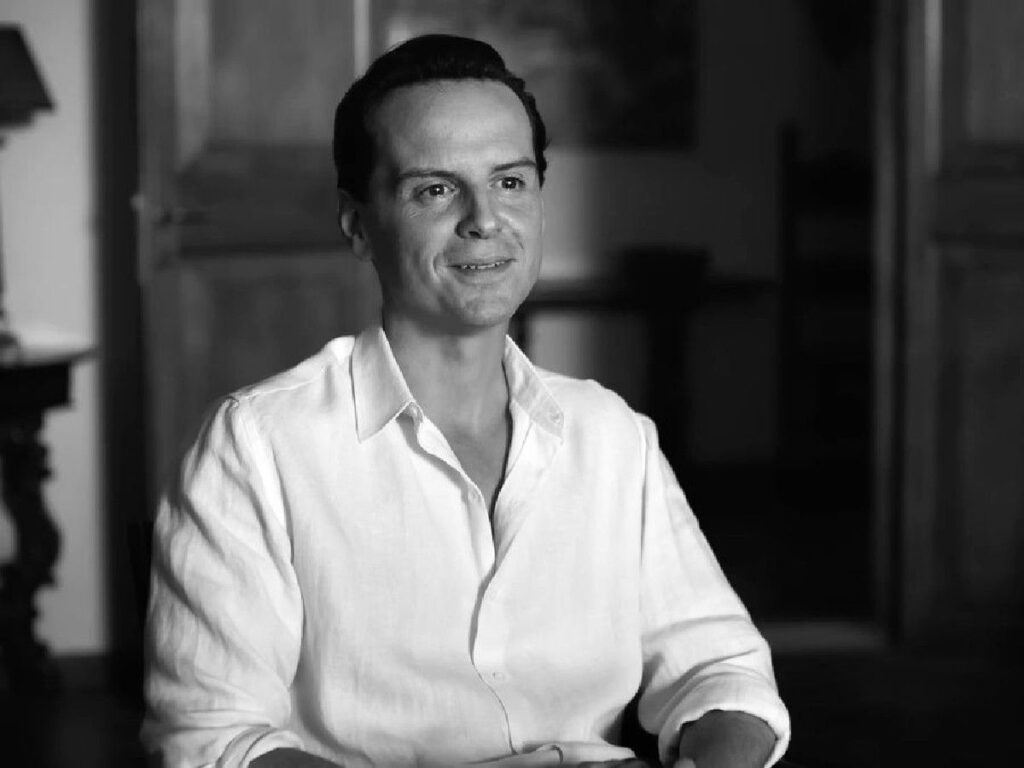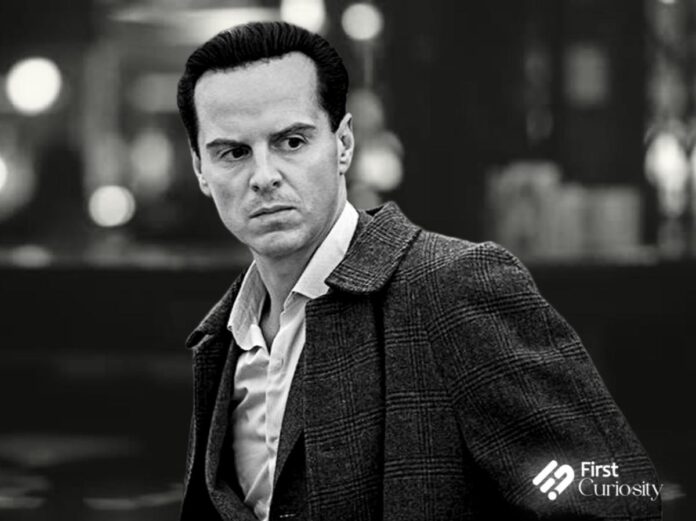After the long after-effect of 1999’s ‘Talented Mr. Ripley,’ fans are finally getting a stretched picture of the whole story. Netflix series ‘Ripley,’ starring Andrew Scott is stirring up excitement among fans and critics alike and why wouldn’t it? The twisted plot of this story which has an even more twisted protagonist has got everyone hooked.
However, there’s a certain element to this new adaptation of Patricia Highsmith’s tortured tale. The key point featuring the new Netflix series that has caught everyone’s attention is the decision to film the series entirely in black and white. Even if the story is set in the 50s, It’s a somber departure from the usual color palette of modern television. Now it’s pretty clear that this is a creative choice but why? Let’s take a deeper dive into the ‘could be’ reasons behind the monochromatic aesthetic and its significance in bringing Highsmith’s dark and complex world to life.
Related: Is ‘The Talented Mr. Ripley’ Based On A True Story?
Steven Zaillian’s Vision For ‘Ripley’

It seems our answer lies in the depths of Steven Zaillian’s mind, the writer-director behind the latest revival of the high-class tale. Zaillian has been pretty open about his creative inspiration and decisions going into the making of Patricia’s masterpiece. In a conversation with Variety, he explained the reasoning behind the Black and White frames of the ‘Ripley’. He said, “The edition of the Ripley book I had on my desk had an evocative black-and-white photograph on the cover,” he explained. “As I was writing, I held that image in my mind. Black and white fits this story — and it’s gorgeous.
The monochromatic palette serves a deeper purpose in setting the tone for the series. As our favorite priest from ‘Fleabag’ takes in the role of a murderous sinner Tom Ripley, the dark nature of the story demands a visual language that matches its mood. “I just couldn’t imagine that taking place in a beautiful Italian setting,” Scott remarked. “…With bright blue skies and colorful outfits.” Indeed, the absence of color in a story smeared with blood holds the potential to allow viewers into the shadows of Ripley’s world, where deception and intrigue lurk around every dimly lit corner.
In case you missed:‘The Talented Mr. Ripley’ Ending Explained: What Happened To The ‘Likable Pssychopath’?
Noir Aesthetics

Another one of the primary reasons for choosing black and white for the series might be to pay homage to the classic film noir genre as it’s deeply rooted in mystery, intrigue, and moral ambiguity. Our antihero Andrew Scott himself acknowledged the question of the colorless pallet. He justified his understanding of it by telling IndieWire that the aesthetic helps in setting the mood one needs to watch this kind of stuff. To quote the actor, “Knowing that the black and white nature of cinematography marries in some way with the pacing and the tone of the show, also means that it allows us as actors just to be.”
By adopting this deeper visual style ‘Ripley’ aims to capture the brooding atmosphere and psychological depth of Highsmith’s novels. The stark contrast between light and shadow, characteristic of black-and-white cinematography, adds neatly stacked layers of complexity to the narrative. It also helps that it mirrors the moral complexities of Tom’s horrible actions.
Moreover, black and white has a timeless quality that transcends eras. That makes it the perfect canvas for exploring themes of identity, deception, and obsession. Yes, these are the exact themes central to Highsmith’s work.
Related: Will There Be ‘Ripley’ Season 2 On Netflix?
Challenging Narrative Expectations

Lastly, shooting ‘Ripley’ in black and white challenges the already set-in-slumber narrative expectations from 1999. It invites audiences to approach the story from a fresh perspective. In a media amusement park saturated with vibrant colors and flashy visuals, the decision to eschew color in favor of black and white is a bold statement but we’re talking about the tale of twisted Tom Ripley here, bold is a humble word.
The decision to shoot Netflix’s ‘Ripley’ in black and white is a deliberate and carefully thought-through creative choice. It adds that depth, atmosphere, and visual sophistication to the series it requires.
You might also like to read:

